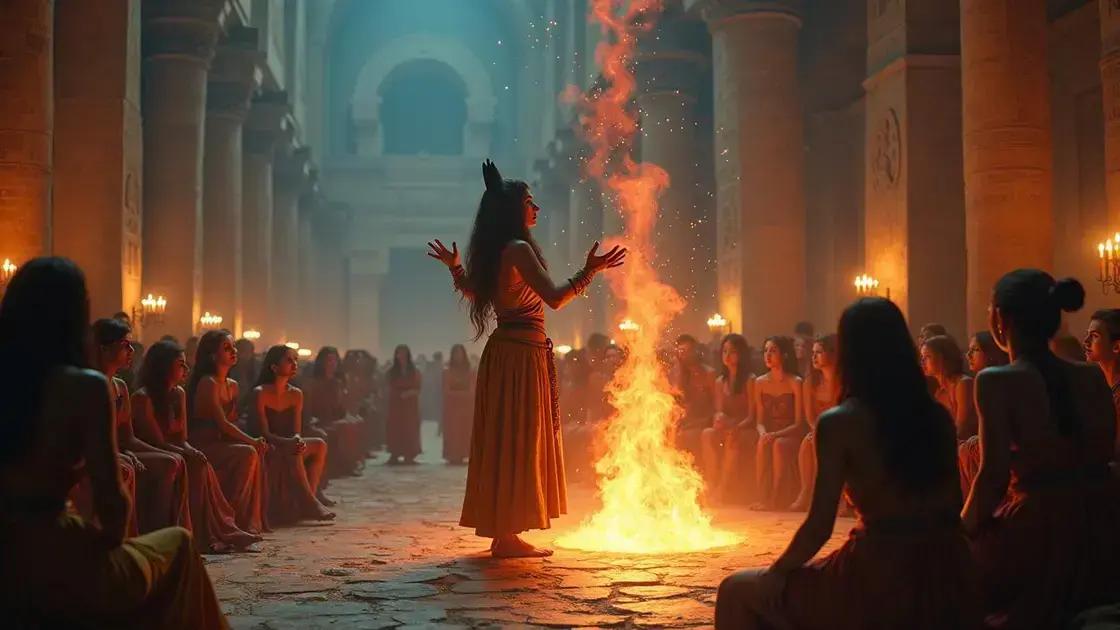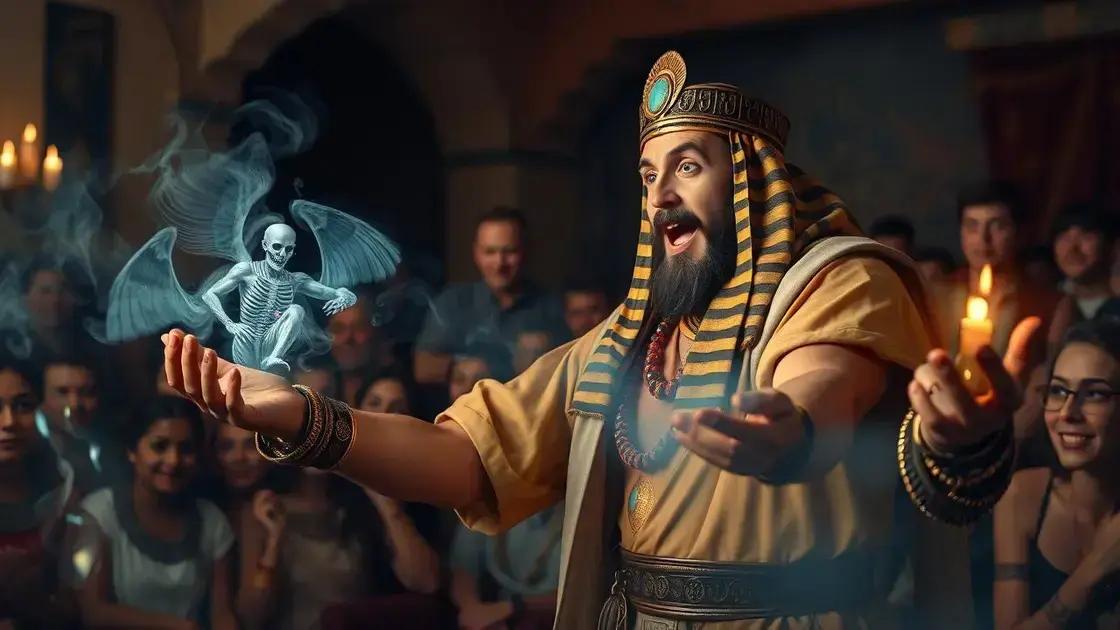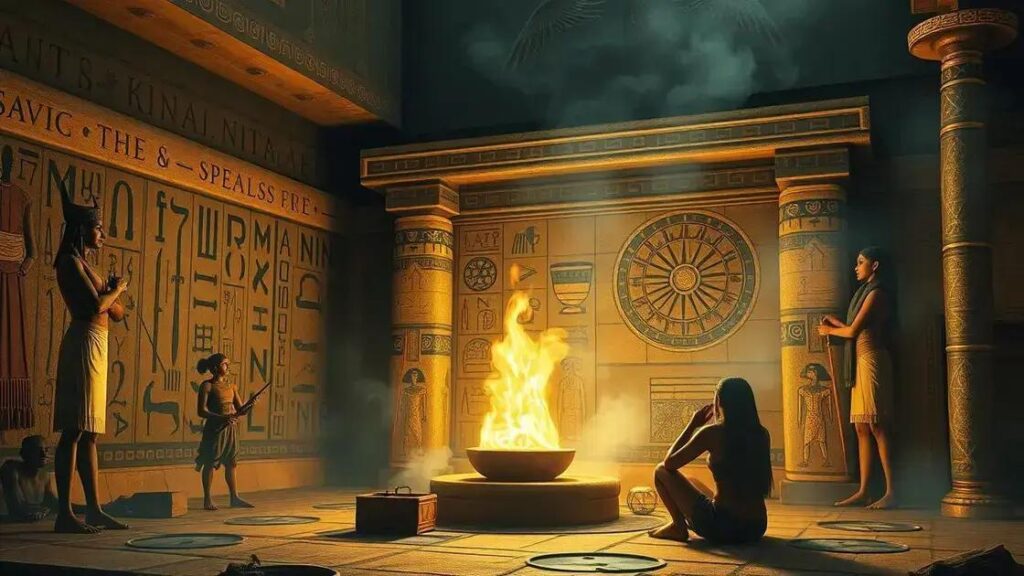The Trick of the Egyptians showcases ancient practices that blend illusion and psychology to create mesmerizing performances, identified by audience engagement, emotional reactions, and storytelling, indicating their effectiveness in captivating viewers.
The Trick of the Egyptians has long been surrounded by mystery and intrigue. As one delves into its ancient practices, it becomes essential to unveil the early indicators that the Trick of the Egyptians is effective. In this article, we will explore two distinct areas: understanding the trick itself and identifying the signs that indicate its success. Get ready to uncover fascinating insights that could reshape your beliefs!
Understanding the Trick of the Egyptians

The Trick of the Egyptians refers to various ancient practices that often involve mystery, illusion, and the power of suggestion. These methods were not just mere tricks; they were intricate rituals that carried deep cultural significance. In ancient Egypt, these practices were seen as ways to connect with the divine and harness natural forces. Many believe that the success of these tricks relies on understanding psychological principles and the audience’s perception.
The Historical Context
The use of tricks dates back to thousands of years ago. It was common for priests and magicians to perform feats that astounded spectators. Their ability to manipulate objects, create illusions, and influence minds demonstrated a deep understanding of human behavior. This historical backdrop sheds light on the legitimacy and effectiveness of the tricks.
Techniques Used
Tricks used by the Egyptians often included sleight of hand, misdirection, and elaborate storytelling. These techniques required skill and practice. For example, magicians would use simple objects, such as cups or ropes, to create visual puzzles that captivated audiences. By enhancing the experience with dramatic presentations, they created an engaging atmosphere that intensified the effectiveness of the tricks.
The Role of Belief
A crucial aspect of the Trick of the Egyptians is the belief of the audience. When people believe in the possibility of magic or the supernatural, it enhances their experience. This psychological factor can influence how they perceive the effectiveness of the tricks. Moreover, the cultural context in which these tricks were performed played a significant role in shaping public perception.
Modern Interpretations
Today, many entertainers and magicians draw inspiration from these ancient practices. They combine traditional techniques with modern technology. This fusion creates a new context for understanding the effectiveness of these tricks. By analyzing the foundational elements of the Trick of the Egyptians, contemporary performers can innovate and mesmerize audiences in unique ways.
Identifying Key Signs of Effectiveness

Identifying key signs of effectiveness in the Trick of the Egyptians involves looking for specific indicators during performances. A successful trick often leaves the audience in awe, showing genuine surprise and amazement. This emotional reaction is a strong sign that the trick has been effective. Moreover, if viewers discuss the trick afterward, sharing their thoughts and excitement, this indicates a memorable experience.
Audience Engagement
Effective magic engages the audience’s attention. When people lean in closer, whisper to each other, or gasp during the performance, these reactions signify that they are captivated. This engagement can be measured by how participants react during and after the trick is performed. If they are eager to see more or ask questions, it clearly shows that the trick resonated with them.
Memorable Moments
Another sign of effectiveness is the creation of memorable moments. A successful trick often features a surprise element or unexpected twist that leaves a lasting impression. These memorable elements not only make the trick enjoyable but also enhance recall. After the performance, if the audience can vividly describe the best part, it highlights the trick’s impact.
Use of Storytelling
Storytelling enhances the effectiveness of magic. When the magician incorporates a narrative or theme into the trick, it allows the audience to connect on an emotional level. This connection is a vital sign that the trick is not just about the illusion but also about the experience created. If the audience feels a sense of involvement, they are more likely to view the trick as effective.
Feedback and Reflection
After the performance, obtaining feedback from the audience can be valuable. Positive comments, laughter, and excitement indicate that the trick was well-received. Additionally, the willingness of viewers to discuss their experience or share it on social media further reinforces the idea of effectiveness. Overall, recognizing these signs can help evaluate the success of the Trick of the Egyptians during performances.
Wrapping Up the Wonders of the Trick of the Egyptians
Throughout this exploration, we have uncovered the early indicators that the Trick of the Egyptians works wonders. By understanding the underlying principles and techniques used in these magical performances, we gain insight into their effectiveness.
Identifying key signs of effectiveness, such as audience engagement and memorable moments, reinforces the profound impact these tricks can have. The blend of storytelling and genuine emotional responses ensures a lasting connection with viewers.
The magic of the Egyptians is not only about illusions; it reflects a rich history intertwined with human perception and belief. Embracing these aspects allows us to appreciate the artistry behind these timeless performances.
FAQ – Frequently Asked Questions about the Trick of the Egyptians
What is the Trick of the Egyptians?
The Trick of the Egyptians refers to ancient magical practices that combine illusion, psychology, and ceremonial elements to create captivating performances.
How can I identify effective magic tricks?
You can identify effective magic tricks by observing audience engagement, memorable reactions, and emotional connections during performances.
Why is storytelling important in magic?
Storytelling enhances the magic experience by creating emotional connections, making the trick more relatable and memorable for the audience.
What signs indicate a successful magic performance?
Signs of a successful magic performance include audience surprise, excitement, active engagement, and positive discussions after the trick.
How does belief affect the effectiveness of magic tricks?
When the audience believes in the magic, it enhances their experience, making the tricks appear more effective and significant.
Can modern magicians learn from ancient techniques?
Yes, modern magicians can learn from ancient techniques by studying the principles of illusion and audience psychology used in historical performances.












